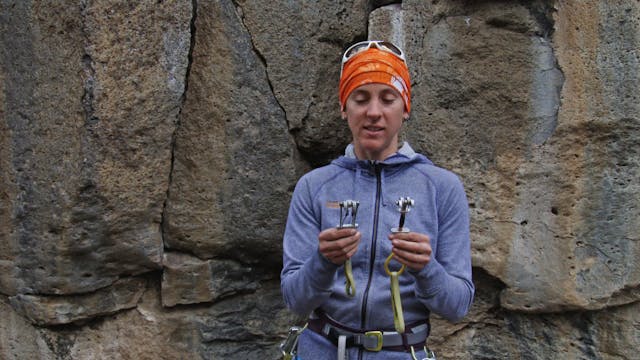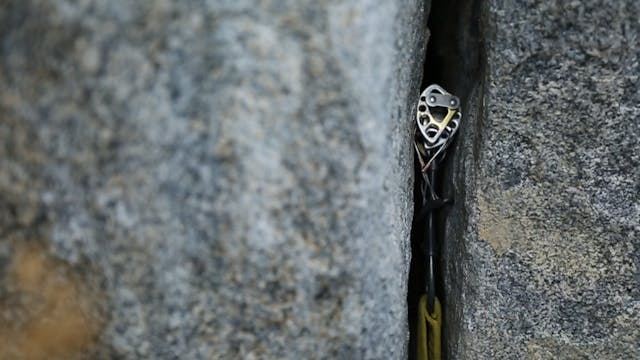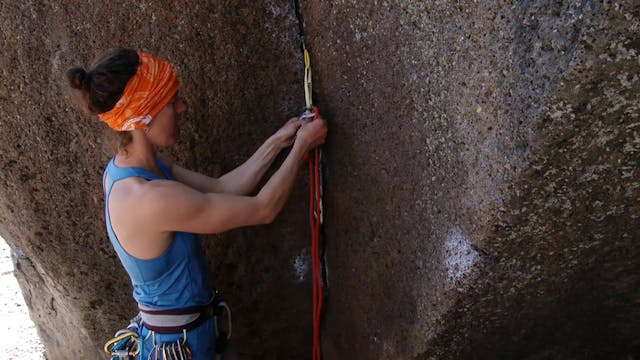Traditional Climbing: 8. Cam Placements - Small Cams
Traditional Climbing
•
1m 56s
In this video we review considerations for placing small cams. Small cams are cams that range from 0.5 - 2.5 inches in size. Because they are smaller, they also have a proportionally smaller range of crack sizes they will fit.
- Less leeway for placement size. Due to the smaller size, a small cam has a more limited range of crack size it can fit. Larger cams have a proportionally greater range of crack sizes they can fit.
- More susceptible to rock quality. Since a small cam has less surface area creating friction with the rock , any minor deterioration to the rock under one of the lobes, or a mild shift in its placement, could cause a lobe to become uneven and the cam could potentially fail.
For this reason, it’s very important to make sure small cams are well placed. Below are considerations for correctly placing small cams:
1. Never pull the cam trigger 100% as this can result in the cam getting stuck in the crack. Instead pull the trigger so the cam is about 80-90% cammed, then find a good fit in the crack.
2. Look for sections of parallel cracks or pods/pockets, as these will ensure a strong, or “bomber,” placement—and prevent the cam from moving (walking). Avoid uneven cracks that make the lobes cam differently, and be sure you have a proper fit, so your cam is neither over-cammed nor “tipped out.”
3. Always place cams so that they are angled in the direction of pull, whether for anchor use or protection from a potential fall.
4. After the piece has been placed, check that all lobes are even, and give the cam a pull test (while looking away so the cam doesn’t hit you in the face if it blows!).
We hope you found this video helpful. Feel free to comment below with questions or thoughts!
Please remember, climbing is inherently dangerous. Climb at your own risk.
Up Next in Traditional Climbing
-
Traditional Climbing: 9. Cam Consider...
In this video we review considerations between using a 4 lobe (Alien) vs 3 lobe (Metolius TCU) cams. Both can be useful, and have different applications (see below):
4 Lobe:
- Wider than the 3 lobe, so not ideal for shallow cracks.
- More surface area than 3 lobe, can inspire more confidence... -
Traditional Climbing: 10. Retrieving ...
In this video we review considerations for retrieving stuck cams. Cams can get stuck for many reasons. Perhaps it was incorrectly placed, jammed into place when fully cammed, i.e. by a freaked out climber on lead in desperate need of protection. Sometimes the rope movement after the leader climbs...
-
Traditional Climbing: 11. Building Tr...
In this video we review the fundamentals of building a traditional anchor system. You’ll notice we revisit the acronym of S.E.R.E.N.E., however this time we have added an extra “E”, which will be covered in the next video “Building Trad Anchors - S.E.R.E.N.E.”
For now, let’s start from the top...


